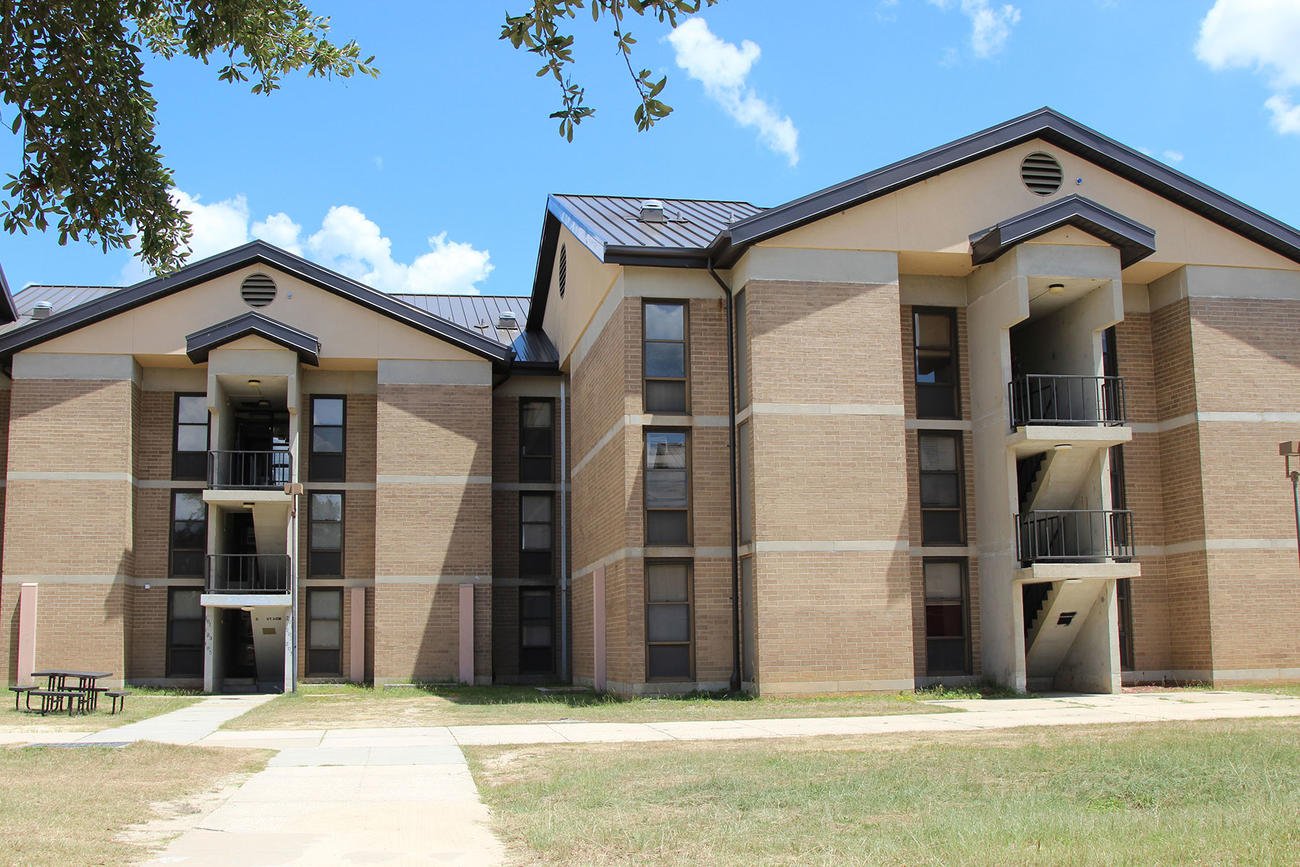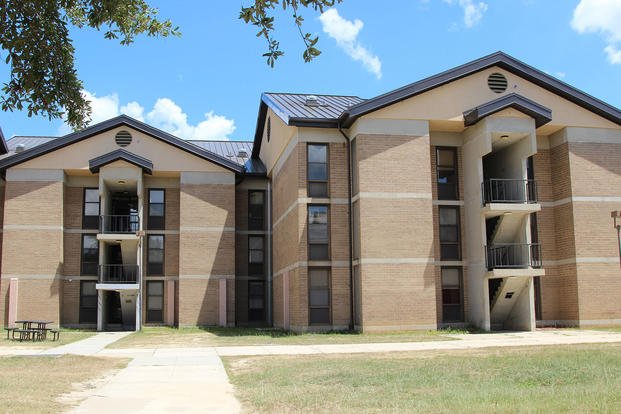

More than two weeks after Army officials announced they would move within a month some 1,200 soldiers from the moldy barracks at Fort Bragg, North Carolina, deemed unlivable by senior officials, the service won’t say how many have been moved, when all troops will have vacated the buildings, roughly how many will remain in barracks on base versus moving off post, how the service plans to help those moving off base find apartments in a tight housing market, and many other basic questions.
For now, most soldiers are still in the Smoke Bomb Hill barracks, housing that has been plagued for years by issues long known to Army leadership, unsure of where they’ll end up living. The sudden evacuation was spurred only after an inspection from Sergeant Major of the Army Michael Grinston last month and an order from Gen. Edward Daly, who oversees the management of Army installations.
Some troops have been trickling into barracks otherwise put aside for Army schools on the installation, while others have rented apartments in town on their own dime, hoping to eventually be qualified for a housing allowance, according to several soldiers interviewed by Military.com.
Read Next: Former Navy Official Convicted on Bribery Charges Tied to Steering Contracts for Cash and Booze
The scramble for housing comes as the service is in the midst of a recruiting crisis, with housing conditions serving as a top issue, according to Army families. At least a dozen barracks at Fort Bragg are impacted, mostly due to being outfitted with mid-20th century air conditioning that leaks, creating a breeding ground for mold. Officials concluded that the cooling systems would be more expensive and complicated to repair and maintain than simply replacing the barracks buildings, leading to the evacuation and planned demolition of the Smoke Hill buildings.
It’s unclear what the Army plans to do with the bulk of soldiers who do not know where they will end up living. Some might get a housing allowance typically reserved for married soldiers. However, it’s unclear whether the surrounding town of Fayetteville has enough affordable properties for a huge influx of renters on relatively low salaries, even as rampant inflation hits troops and their families hard and after years of slow housing construction has created surging rents nationally.
The effort to move that many soldiers is virtually unprecedented and would be a monumental effort for local leaders. Living quarters at installations are usually fully assigned, with few beds in excess. Soldiers could be moved to hotels paid for by the Army, but there are few spots outside of base for so many troops, and that could quickly impede local commerce. The moldy barracks are set to be demolished, with new buildings constructed within five years, making any housing substitutes far from temporary.
Officials at Fort Bragg could not detail who would qualify for a housing allowance and declined Military.com’s request to interview officials with direct knowledge of the relocation efforts; they also did not answer questions on plans to find proper living quarters for soldiers from multiple units. Installation officials declined to comment on the units impacted, but the barracks do encompass some special operations units.
In the days since the initial announcement, spokespeople at Fort Bragg have reiterated that officials were taking a “deliberate phased approach, a process that entails coordination throughout the installation and with the Soldiers’ well-being in mind” to the move of more than 1,000 troops. However, details of that approach, or even assurances that it has begun, have yet to materialize.
On Aug. 10, five days after the Army announced the evacuation, a spokeswoman for Fort Bragg said that the leaders anticipated the moves would “take place over the next 30 days or sooner,” but in follow-on questions acknowledged that no one had actually been moved.
Almost a week after that admission, on Aug. 16, the Army put out a press release that announced soldiers were “prepping to relocate to various available barracks rooms around the installation.” Days later, the media office explained that “the relocation process can begin as early as this week” — but still did not offer any details on when the relocations would begin.
The Army also couldn’t say how many soldiers would be offered a housing allowance and the ability to move off base that the service touted in its statement. “That information is still be[sic] assessed as we work through on-going coordination between the units and the installation,” a base spokesperson said in an email to Military.com.
Moldy barracks and housing are hardly unique to Fort Bragg or even the Army; the issue has persisted for decades and can be found on posts throughout the country. Task & Purpose recently reported at least a dozen families from Fort Belvoir, Virginia, had been displaced due to unlivable conditions on that base.
Some of the issues have been blamed on private housing contractors. Balfour Beatty Communities, which manages 55 housing communities on military bases, has been accused of ignoring residents’ concerns about hazardous living conditions and pleaded guilty last year to defrauding the Army, Air Force and Navy by manipulating maintenance records to get bonus payouts it didn’t deserve.
— Steve Beynon can be reached at [email protected]. Follow him on Twitter @StevenBeynon.
— Konstantin Toropin can be reached at [email protected]. Follow him on Twitter @ktoropin.
Related: No Soldiers Have Been Moved Yet from Condemned, Moldy Fort Bragg Barracks
© Copyright 2022 Military.com. All rights reserved. This material may not be published, broadcast, rewritten or redistributed.
